
Hi,
I am new to use networking materials. Well I wanted to ask that I have some proxies I bought it recently but it is not working it is based on only like that (192.168.35.3) port 8080:
This is not working with me and I need it urgently. I am new but if you tell me how to use, I will understand it. If it has any video please give me the link.
I will be very thankful to you if you will be responding to my question. If anyone knows the solution please send it to me here.
I am waiting for your reply.
This is a new site for me, I wish that I will get good response.
Thanks.
How to set proxy to my ip address.

According to your question:
How to set up your proxy IP address.
This is essentially getting to be invisible (to some level) on the internet and to enable you to visit websites that may have been blacklisted by a firewall or something at an institution such as a school, or even an office at that.
There are various methods that you can employ to conceal your IP address from each of the web servers you are logged into, one of the most common methods is by the use of a proxy server. At the very basic a proxy server acts as the link between you and the internet and is usually a computer. What happens is that every page requested by you from the internet goes through the proxy server.
The proxy server then deletes your IP address from the page requests and substitutes it with one generated from it (the proxy server). This is mainly done through software. Web based proxy servers are preferred by most people due to their anonymity with some claiming that they are the most anonymous.
There is one disadvantage with using proxy servers and this lies in the fact that the browsing speed may be reduced to some level, this is because you shall be using a specific IP address of your choice.
To illustrate this consider your place of residence, the IP you shall be used, the physical distance from the server and the actual number of people using the server. Generally the greater these parameters are, the more your browsing speeds shall be negatively affected. This is a tutorial that might help
Downloading software that hides your IP may also help. Proxy website I have used before include:
All the best in getting invisible on the web.
How to set proxy to my ip address.

If you are using Internet Explorer to browse the internet, you can change the proxy server on the Internet Options.
Go to Start > Control Panel > Internet Options.
On the Connections tab, look at the bottom part of the Window. Click on the LAN Settings.
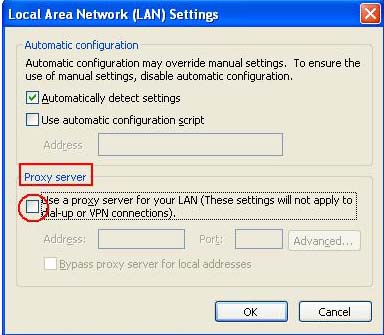
Check the "use a proxy server for your LAN" box. To enable it. Then put your proxy address and port in the available boxes below it. Press OK.
If you use Firefox, go to Options > Advanced.
Open the Network Tab and click Settings.
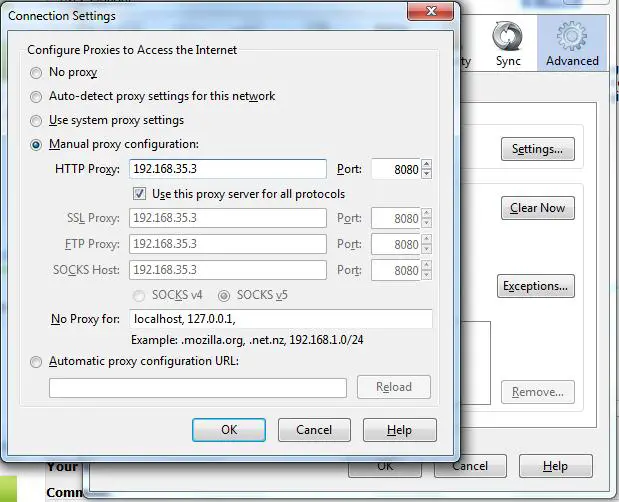
Put your proxy address and port in the available boxes (look picture above).
I hope you can use your proxy now.
Answered By
Janine08
5 points
N/A
#101329
How to set proxy to my ip address.

Hi Ahmed-Siddiqui, the following are instructions to configure various browsers to use a HTTP proxy server.
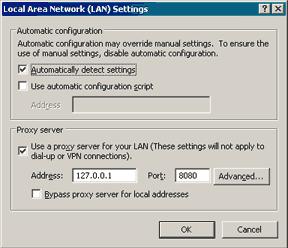
Internet Explorer 6
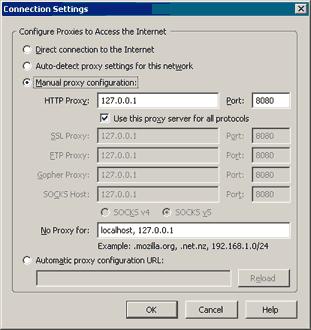
Firefox
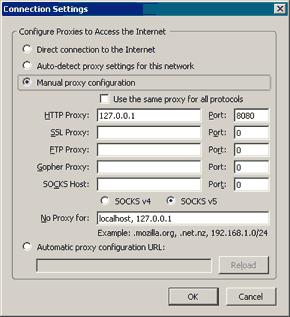
Netscape 8
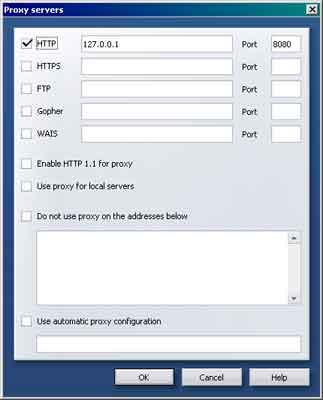
Opera
Instructions for Internet Explorer 6.0
1. On the Tools menu in Internet Explorer, click Internet Options, click the Connections tab, and then click LAN Settings.
2. Under Proxy server, click to select the Use a proxy server for your LAN check box.
3. In the Address box, type the IP address of the proxy server.
4. In the Port box, type the port number that is used by the proxy server for client connections (by default, 8080).
5. You can click to select the Bypass proxy server for local addresses check box if you do not want the proxy server computer to be used when you connect to a computer on the local network (this may speed up performance).
6. Click OK to close the LAN Settings dialog box.
7. Click OK again to close the Internet Options dialog box.
Instructions for Internet Explorer 5
1. Click Start, point to Settings, click Control Panel, and then double-click Internet.
2. Click the Connections tab, click LAN Settings, and then click to select the Use Proxy Server check box.
3. In the Address box, type the appropriate proxy server information, and use the following format: http://<address>
4. Click Advanced, and then type the appropriate proxy settings in the Servers area. Use the following syntax for the proxy settings: http://<address>:<port> where <address> is the Web address of the proxy server, and <port> is the port number that is assigned to the proxy server.
For example, if the proxy server's address is "proxy.example.microsoft.com" and the port number is 80, the setting in the Proxy Server box should appear like this: http://proxy.example.microsoft.com:80 Important: If you use a backslash () instead of a slash (/) in the proxy server's address, the settings disappear from the Proxy Server box and Internet Explorer does not find the proxy server.
Instructions for Firefox 3.0
1. Select the Tools Menu.
2. Select Options.
3. Select the Advanced Icon.
4. Select the Network tab.
5. Under connection select Settings.
6. Under Settings you can choose "Auto-Detect Proxy setting for this network" or "Manual Proxy Configuration".
7. If choosing "Manual Proxy Configuration" Enter the IP address for the HTTP proxy server.
8. Enter the port of the HTTP proxy server.
9. Click Okay.
Instructions for FireFox 2
1. Select the Tools Menu.
2. Select Options.
3. Select Connection Settings.
4. Select Manual Proxy Configuration.
5. Check Use the same proxy for all protocols.
6. Enter the IP address for the HTTP proxy server.
7. Enter the port of the HTTP proxy server.
8. Click Okay.
Instructions for Netscape 8.1
1. Select the Tools Menu.
2. Select Options.
3. Select General.
4. Select Connection Settings.
5. Check Manual Proxy Configuration.
6. Enter the proxy server's IP address in the HTTP Proxy field and the proxy's port into the Port field.
7. OK your way out.
Instructions for Netscape 7.1
1. Select the Edit Menu.
2. Select Preferences.
3. Maximize Advanced.
4. Select Proxies.
5. Choose the Manual proxy configuration.
6. Enter the proxy server's IP address in the HTTP Proxy field and the proxy's port into the corresponding Port field.
7. OK your way out.
Opera 8.5
1. Select the Tools Menu.
2. Select Preferences.
3. Select Advanced Tab.
4. Select Proxy Servers.
5. Check the box next to HTTP.
6. Enter the proxy server's IP address in the first box and the proxy's port in the box after "Port".
7. OK your way out.
Safari 2.0.3
1. Select Preferences.
2. Select Advanced.
3. Select Proxies: Change Settings.
4. Check the box next to the Web Proxy (HTTP).
5. Enter the proxy server's IP address in the first box and the proxy's port in the box after the ":"
6. Select Apply Now.


















